Often, you hear Italians refer to summer as “La Stagione,” which literally means "the season." This phrase implies that summer is not just a season, but “THE” season—the most significant of all. In reality, summer in Italian is “estate”.
Italy's seasons each bring their own charm, but summer! Ah, summer! L’estate is an entirely different story. This is the season that defines Italy. The days are long, the heat is intense, and the evenings stretch on endlessly. Festivals abound, and open-air concerts and sagre (local food festivals) celebrate everything from truffles to prosciutto to baccalà (cod) or ribollita (Tuscan soup). I believe these festivals are just another excuse to celebrate, no matter the reason. From early July until the end of August, the entire country slows down to savor the warmth and joys of l’estate.
Yet, Italians have a love-hate relationship with summer. They constantly complain about the thermometer hitting the forties degrees Celsius, but refuse to turn on their “new” air conditioners. New, not because they’ve just installed them, but because they’ve barely used them in the past decade. “L’aria condizionata mi fa venire la cervicale”, they say. “Con questo caldo non è buono entrare a casa e poi sentire questo gelido freddo...” (“Air conditioning gives me neck pain; it’s not good to come home and then feel this freezing cold.”) It’s a chorus of complaints about the oppressive heat, the sticky humidity, and the difficulty of sleeping on summer nights. But deep down, most wouldn’t trade their scorching summers for anything.
Small Town Living
In small towns like Colle Val d’Elsa, where I live, there's a familiar routine during July and August. Early mornings are the time to open all the windows to let in the fresh air. The thick cement walls of the houses retain the temperature for longer periods, so managing the airflow is crucial for staying comfortable. In the morning, everything is opened up, but as soon as the sun starts beating down—around 9 or 10 a.m.—everything is shut tight, including le persiane (shutters), leaving the house nearly dark. By noon, the town begins to empty, and by 1 p.m., you won’t see a soul in the streets or piazzas.
On days when I can withstand the heat, I enjoy taking a stroll through the deserted town. Most stores are closed until 3:30 or 4:00 p.m., except for one bar or gelateria and perhaps a pharmacy. There’s a sense of solitude, yet a quiet solidarity as everyone takes a pisolino or pennichella (nap) after their pranzo (lunch). I’ve slowly adopted this habit, and it’s now become one of my favorite parts of the day. I rest in bed in the pitch dark room, with a small fan blowing warm air across my body, while the only sound is the buzzing of cicadas. (I’ve read that male cicadas create this sound to attract females. Then again, we are in Italy—cicadas aren’t the only ones buzzing in the afternoons.)
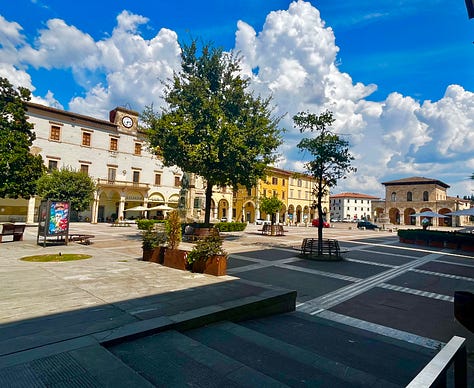
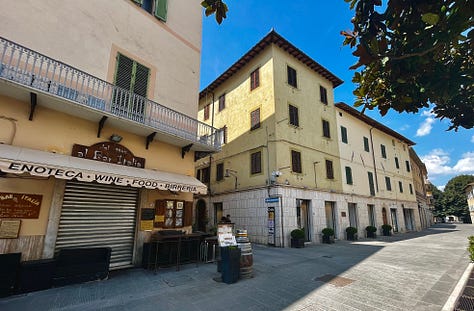

Life starts to awaken again in the late afternoon. Stores reopen, and many people head out around 5 p.m. for a merenda (snack), since dinner isn’t served until 8 or 9 in the evening, when the kitchen finally cools down. By 10 p.m., bars and piazzas are filled with children playing soccer, older men chatting loudly, and women recounting their daily ventures. Bedtime rarely comes before midnight.
The Beach House
To escape the oppressive heat, I rented a house in the coastal region of Maremma for the month of July. I've settled into a routine here: I start my day early, biking 40 kilometers by 9:30 a.m. Afterward, I indulge in a lazy stretch until late afternoon, when I head to the beach to enjoy the sunset and the cooling sand. What drew me to this house was its covered rustic terrace, where I did most of my writing.
The Bar At The Beachside
This morning, after my ride, I stopped at Pasticceria Reale in Marina di Grosseto, a beach resort where both locals and tourists spend their days sunbathing under the intense sun. Italians seem remarkably unconcerned about the harmful effects of UV rays. They sport deep tans, smoke, and indulge in cornetti (croissants) filled with cream, along with cappuccinos or espressos. It’s a mystery how they stay so thin; I feel like I gain weight just watching them. By the way, Italy is among the countries with the highest life expectancy. (Perhaps a topic for one of my newsletters!)
At 9:40 a.m., the bar was bustling with locals getting their morning fix or gearing up for a day at the beach across the street. Here, you can truly feel the Italian summer—the sense of vacation and the laid-back atmosphere. During this time, you forget about Italy's usual cultural hustle and vibrant lifestyle. Instead, Italy feels like a scene from Fort Lauderdale, Cuba, or the French Riviera.
This morning, I treated myself to a crostata all'albicocca and a ginseng coffee (more on ginseng in a future newsletter). The crostata is typically Italian, pure delight. For me, it embodies Italy in all its splendor, celebrated for its simplicity and deliciousness. The base is typically made from shortcrust pastry (pasta frolla), which is buttery, slightly sweet, and has a crumbly texture. For a crostata all'albicocca, the filling is apricot jam. The top is often adorned with a lattice pattern made from strips of the same pastry dough, giving it a rustic, appealing look. The crostata is baked until the crust turns golden brown and the jam filling begins to bubble slightly. Pure delight! I sat at one of the outdoor tables, simply enjoying the fun of people-watching.
A middle-aged man, wearing black beach shorts, a baby blue tank top, and sandals, approached a table where a couple was having coffee. He said, “O icché tu fai?” (a Tuscan expression meaning, "What are you doing?"), to which the man sitting replied, “Sei un ciuco,” (“You donkey!”) “Perché non sei venuto ieri sera?” Every region or town has its own dialect, and I’m slowly starting to understand the melodic Tuscan one.
Ferragosto
And then, there’s August. August is the time when Italians prepare for their real holidays. The 15th of the month marks Ferragosto, a national holiday. Ferragosto traces its origins to “Feriae Augusti”, a period when Emperor Augustus declared a break for rest. During this time, nearly everything shuts down, and locals are either fully enjoying their vacations or just wrapping them up. The big question for many is: Beach or mountains? Italy offers an abundance of both. The Apennine mountains, with their rugged peaks, rise as high as 2,000 meters. I often take hikes on Monte Amiata, searching for cool breezes along narrow trails winding through ancient forests.
Interestingly, after Ferragosto, people start lamenting the end of summer. This is ironic, considering that up until now, they’ve been complaining about the heat. Suddenly, they're mourning the approaching end of l’estate and the impending arrival of winter. Winter? Ah yes, that ‘harsh’ Italian winter—those few scattered days of rain in January. But for now, they’ll continue mourning summer’s slow farewell, as if winter’s chill is already knocking on the door. So they say!
Arrivederci until next Saturday—always observing, always sharing, always sipping, always a tale from an Italian coffee bar and beyond.




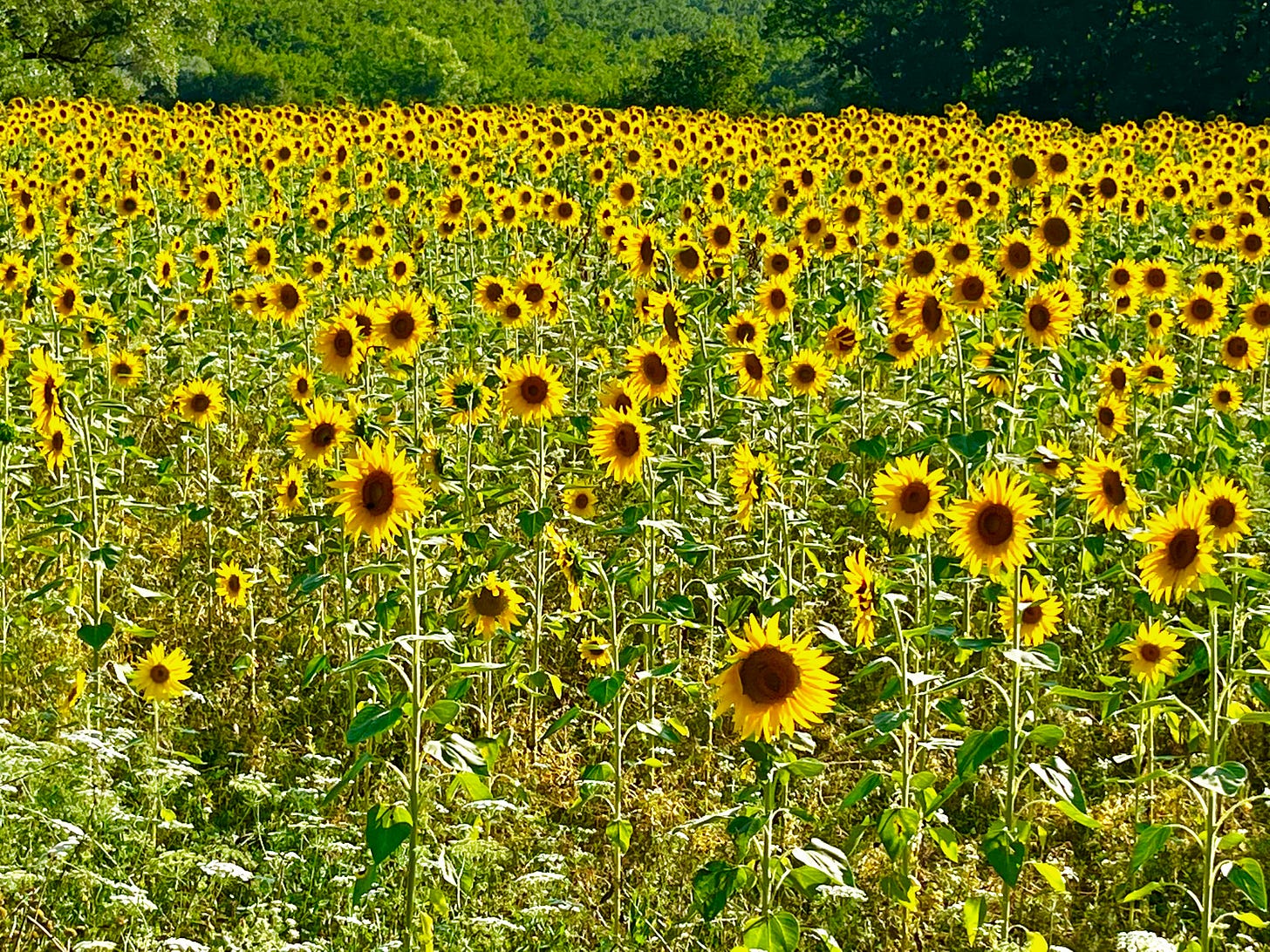

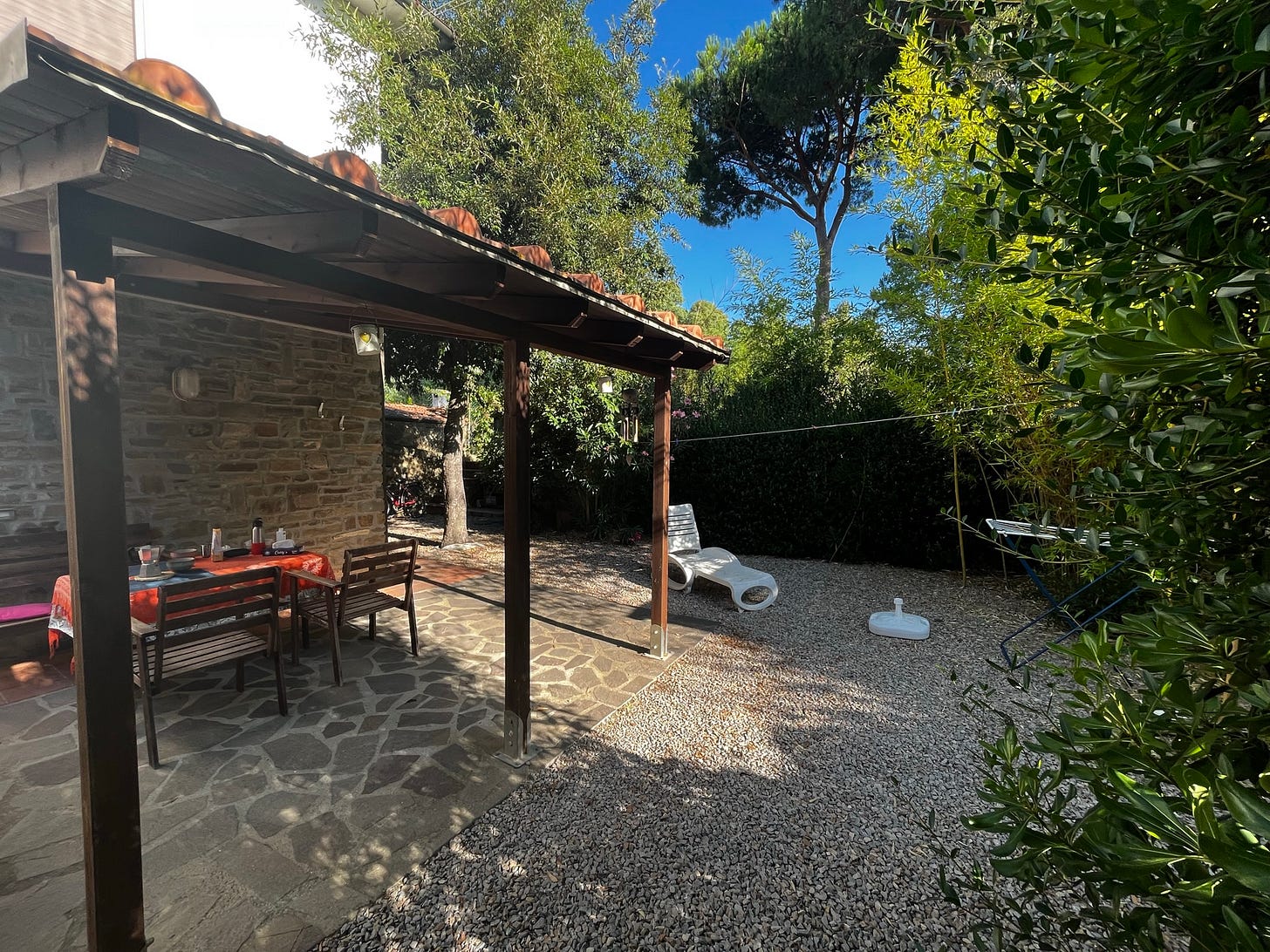

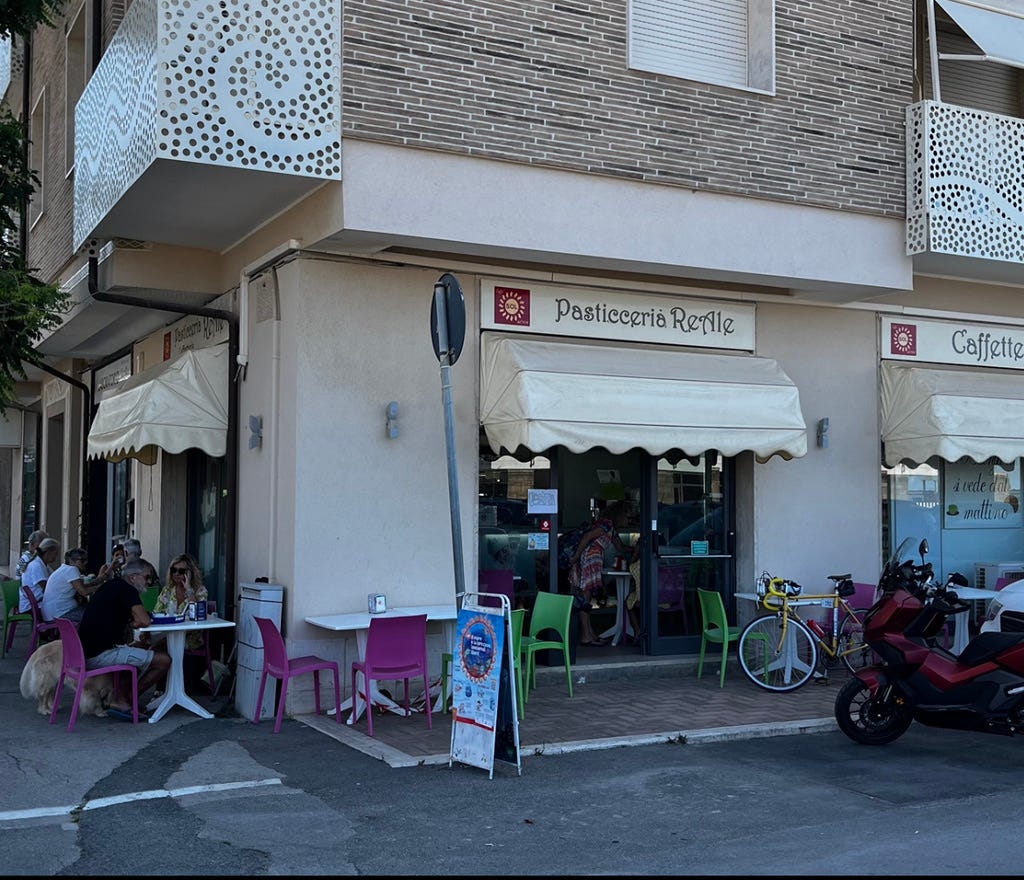
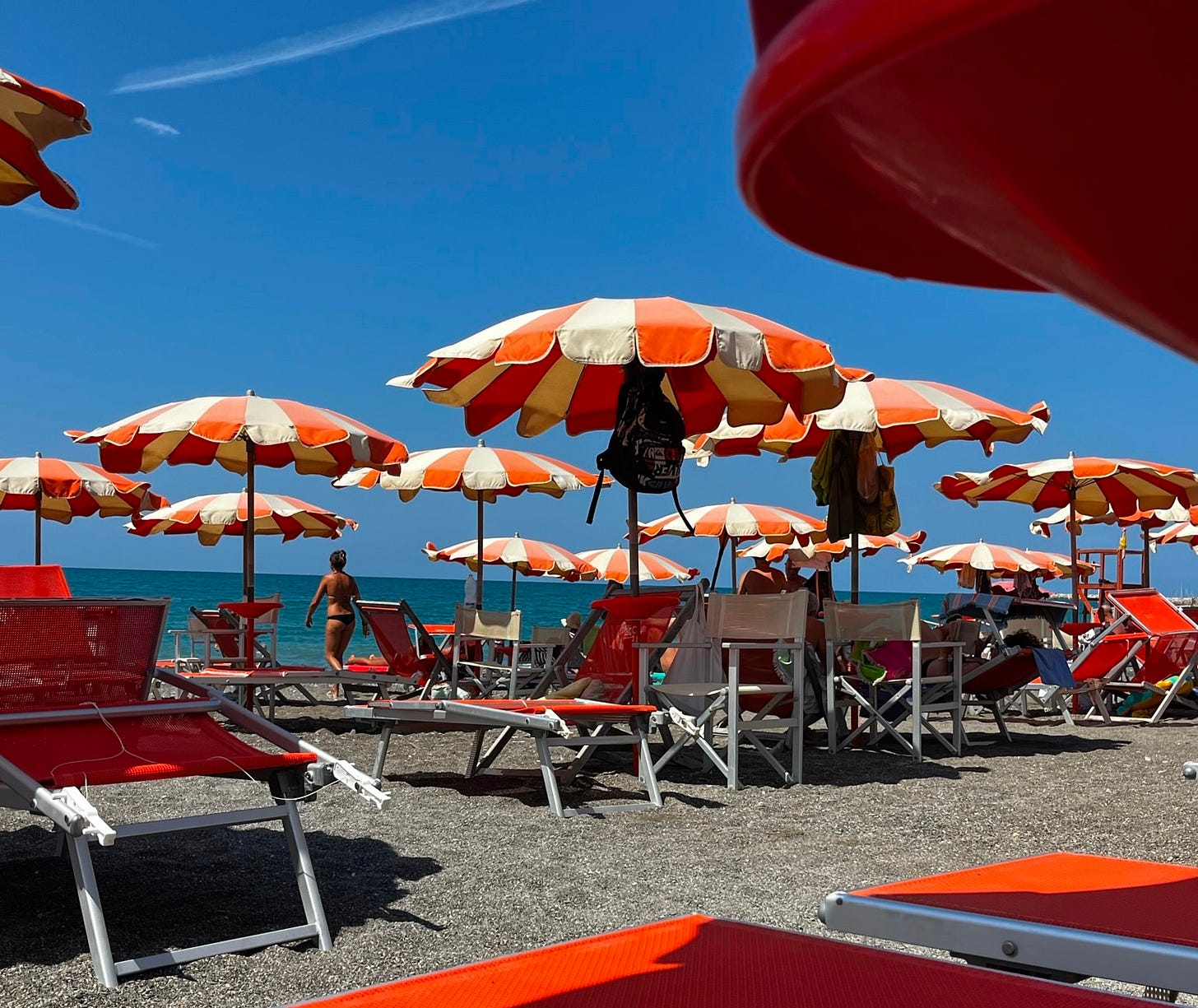
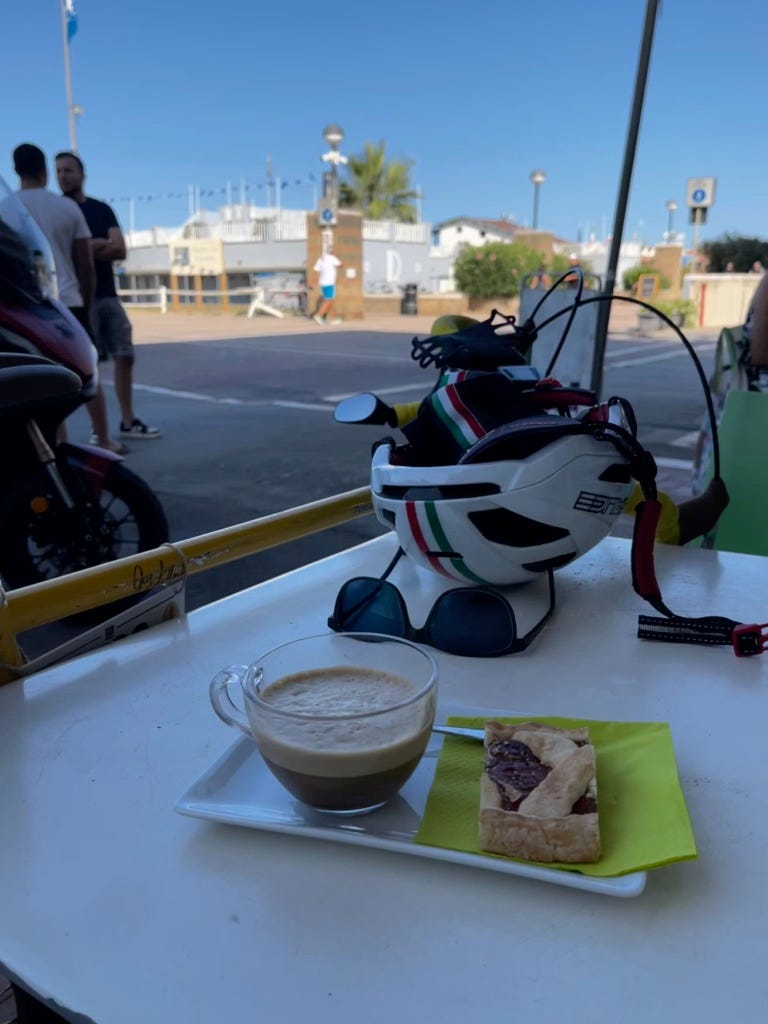
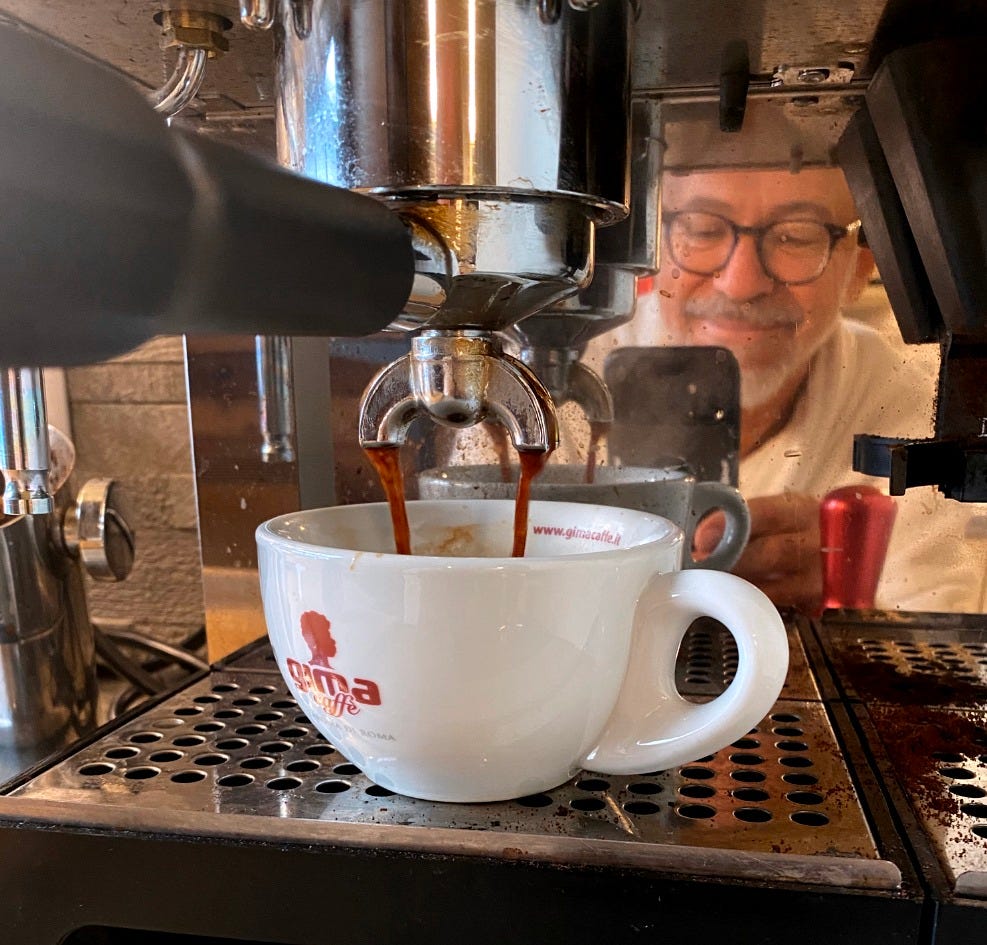
J’ai eu chaud juste à lire ton article 🥵. Vraiment intéressant ton article. J’aime bien les photos qui accompagnent ton article. Ça nous permet de visualiser ce que tu écris 👍
Je suis impressionnée de voir jusqu’à quel point la place est déserte à l’heure de la sieste!